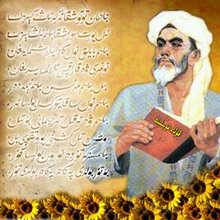Uyghur Twelve Muqams
Muqams were often performed for royalty, but they also were held locally for village gatherings or other special events. These days, there are no festivals held in Xinjiang ( the northwestern province of China) without a muqam. The different regions of Xinjiang each have their own distinct format. In particular, the Kashgar region is famous for their Twelve Muqams, an ancient collection of musical compositions and lyrics that are still performed today. Known as the Mother of Music, these suites embody a concentranted reflection of the wisdom and talent of the Uyghur People in musical creation. The Twelve Muqams include 170 songs and dance tunes, and an addtional 72 instrumental pieces. The entire work takes over 24 hours to perfom from begining to end. Usually, just one muqam is performed over about two hours.The Uyghurs are masters with heteromodal music, and in no place is that more apparent than during a muqam. Often a piece will begin in a heptatonic (Western) scale and end in a pentatonic (Chinese) scale. The way the notes slide in and out and shift scales is very different from western music, and makes the muqam extremely unique.The instruments of the muqam are the instruments of the Uyghur people. The satar is usually featured, along with the tembor or dutar. The rawaps hold the rythm along with the daps. The ghijek and khushtar provide flowing melodies, and many other precussion, wind and stringed instruments fill out the gallery. Many of these instruments can be found at our store, The Camel's Back. In the poster, you can see a man in the center playing the satar, and the man to his left, playing an 11-string khushtar.



没有评论:
发表评论